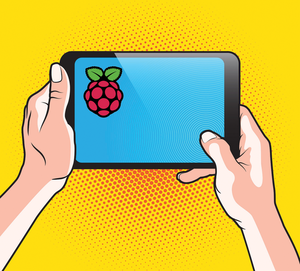Touch Power
The new Rasp Pi display provides a compact option for viewing screen output – and it comes at a Pi-like low price of only $60.

Lead Image © nrey, 123RF.com
The new Rasp Pi display provides a compact option for viewing screen output – and it comes at a Pi-like low price of only $60.
A working Raspberry Pi system requires lots of other parts in addition to the tiny Pi board itself. You'll need a power supply, a mouse, various cables, and, unless you already own one, a monitor to display screen output for your Raspberry Pi system. Raspberry Pi users are accustomed to hunting up old monitors from long-discarded computers, or temporarily requisitioning a monitor from a currently running system to use as a display for the Rasp Pi.
The clutter of a full-size monitor, however, often invades the elegant simplicity of the Raspberry Pi. Monitors tend to be big and bulky, and they typically require their own power cable, which adds more congestion and complication to the tabletop configuration. A Rasp Pi by itself can inhabit an unobtrusive corner of the room, but add a monitor to it, and it really doesn't look much different from a conventional PC.
Some users solve the monitor problem by running their Rasp Pi headless through an SSH connection, but SSH requires you to boot another computer on the network (which, undoubtedly, has its own monitor anyway).
[...]
Pages: 4
Price $15.99
(incl. VAT)